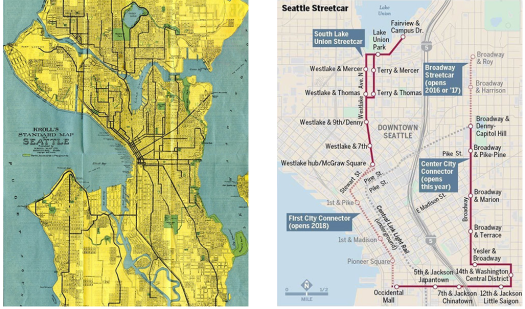This summer various hiking interests have banded together to respond to congestion at parking lots at popular trailheads. The “Snoqualmie Valley Adventure Shuttle” will run on weekends from June 6th through September 12th. Reservations are recommended.
The shuttle will be an 11-passenger van running from North Bend P&R to Little Si, Mount Teneriffe, and Mount Si trailheads, running every half hour through the heart of the day. On Saturdays, this connects with Route 208, providing 7 round trips to Issaquah Transit Center, which the 554 in turn serves regularly from Downtown Seattle.

This is a sensible response to congested lots, a lifeline to carless hiking enthusiasts, and an encouraging initiative. The idea of special routes with enhanced frequency on weekends to recreational destinations is a good one that I wish Metro would embrace. At the risk of being churlish about this positive step, however, there are several problems with this implementation.
The round trip fare is $5 per person, which includes $25 in “SnoValley Adventure Bucks” good for some credit and local businesses. As a daily park Discover Pass is $10/car*, parties of two will break even if they have no use for the Adventure Bucks. While not gouging passengers by any means, this price point fails to reward most people for the greater inconvenience of taking parking pressure off the trailheads. For most parties of two or more, the optimal strategy is to go straight to the trailhead and use North Bend strictly as an overflow lot, assuming there is space available on the van.
Furthermore, the 208 is a thin line with which to connect, one that doesn’t run at all on Sundays. This is perhaps an inevitable consequence of sponsorship by North Bend and efforts to control costs, but direct service to Issaquah would make an all-transit trip downright convenient. With two-hour-plus headways on the 208, this shuttle is, again, more in service to a North Bend satellite lot than a true transit alternative.
But once again, bravo to the City of North Bend, DNR, Mountains to Sound Greenway, and Washington Trails Association for putting this service together. Hopefully this summer’s pilot will demonstrate that there is demand for these trips.
* $30/year for unlimited access.

















